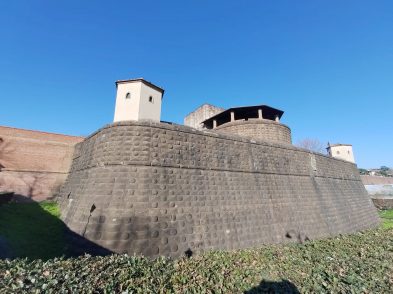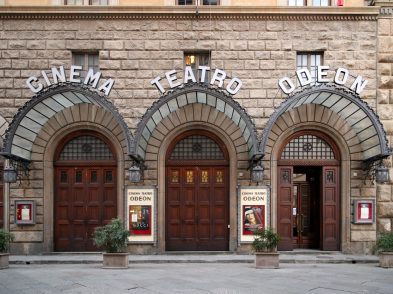Tucked away in the heart of Florence, in the area once known as the Campuccio, running from via del Campuccio and piazza Tasso to via dei Serragli, is a wall that incorporates the remnants of the fortifications built by Cosimo I in 1544 to defend Florence against attack from Siena. From behind the parapet, the top two tiers of a torrino, tower, beckon. These top tiers are just about all most people see of the Giardino Torrigiani, a perfectly preserved—almost magical—garden, which, at 17 acres, is Europe’s largest private garden within city limits.
Pietro Torrigiani (1773–1848) was a fortunate man. Born neither a marquis nor for that matter a Torrigiani, when his maternal uncle, cardinal Ludovico Maria Torriggiani, died in 1777, bringing an end to the long-existing direct Torrigiani lineage, he—the second son of the cardinal’s sister, Teresa Maria Torrigiani, and her husband Giovanbattista Guadagni—inherited the property. His uncle’s generosity, however, came at a price. To claim his uncle’s title and immense wealth, which included six villas and three palaces, farms, land and other properties in town and around Tuscany, Pietro was required to change his surname to Torrigiani and continue the Torrigiani dynasty. From that point, his fortune only grew: he later inherited magnificent estates through his wife, Vittoria Santini, whom he married in 1816, and through Ottavia Guadagni Del Nero, his widowed and childless sister.
When, between 1802 and 1817 Pietro Torrigiani acquired still more land to enlarge his property, the existing botanical garden with its many hothouses, tepidaria and vast collection of trees and plants, many rare and exotic, had already enjoyed nearly three centuries of fame. Torrigiani commissioned architect and landscaper (and fellow Freemason) Luigi Cambray Digny (1778–1843), who had recently renovated the Oricellari gardens (on via Rucellai), to redesign the garden in the romantic English style so popular at the time. Digny created two main winding paths through the garden, one representing the day and the other the night. The paths were full of symbols, especially Masonic ones, among them a statue of Osiris, a grotto named for Merlin, a temple of Arcadia, a statue depicting Seneca with a young Pietro Torrigiani sculpted by Pio Fede (1816–92) best known for his Rape of Proserpina in the Loggia dei Lanzi), a colossal statue of Saturn and a marble column dedicated to Pier Antonio Micheli, who founded the Italian botanical society in 1716.
Between 1780 and 1789, the grand duke of Tuscany, Pietro Leopoldo of Lorraine, had the first astronomical observatory in Florence erected in the tower of a former Torrigiani palace in via Romana, purchased in 1771 to house the Medici natural history collection. Known as La Specola, it was annexed to the Imperial-Royal Museum of Physics and Natural History. While the duke’s intention was ambitious—he wanted it to be the most important astronomical observatory in Tuscany, on a par with the great observatories in Greenwich and Paris—his project was not unusual: during this epoch, many noble and educated men were interested in astronomy, including Pietro Torrigiani, who, in addition to his masonic beliefs and study, dedicated much his time to cosmology and alchemy. In 1821, Torrigiani hired Gaetano Baccani (1792–1867), the architect and engineer renowned for designing the bell tower of the Basilica of Santa Croce, to construct a neo-gothic tower within the garden to house his own observatory. (Baccani completed the garden renovation after Digny’s death.)
Perched on an artificial knoll at the highest point of the garden, the Torrigiani tower stands taller than Giotto’s bell tower in the city below. Prominently displaying the Torrigiani coat of arms—which features a tower (recalling the name) and the three golden stars of the Parte Guelfa on a light blue background—the tower is called the Athanor, named for the furnace used to provide the slow, uniform, constant heat used for alchemical experiments.
The tower is composed of three geometrically different sections—a square, an octagon and a circle, which signify the path to perfection. Of the two-story square, Torrigiani used the ground floor as a storeroom, and on the first floor he set up his library, heated with a stove and lined with bookshelves. In the octagon above, he placed his astronomical equipment and a collection of armaments that belonged to his family and other families close to the Torrigianis. From this floor, he could reach his observatory on the circular third level either by an external spiral staircase on the rampart or internally, by using a mechanical chair—a rudimentary elevator—that ran between the different levels. From the observatory terrace, the terrestrial and celestial views were spectacular.
Descendants of Pietro Torrigiani, the Torrigiani Malaspina and Torrigiani di Santa Cristina, still own the property, live there and maintain the garden. Guided tours of the garden are available by reservation only. See www.giardinotorrigiani.it.







